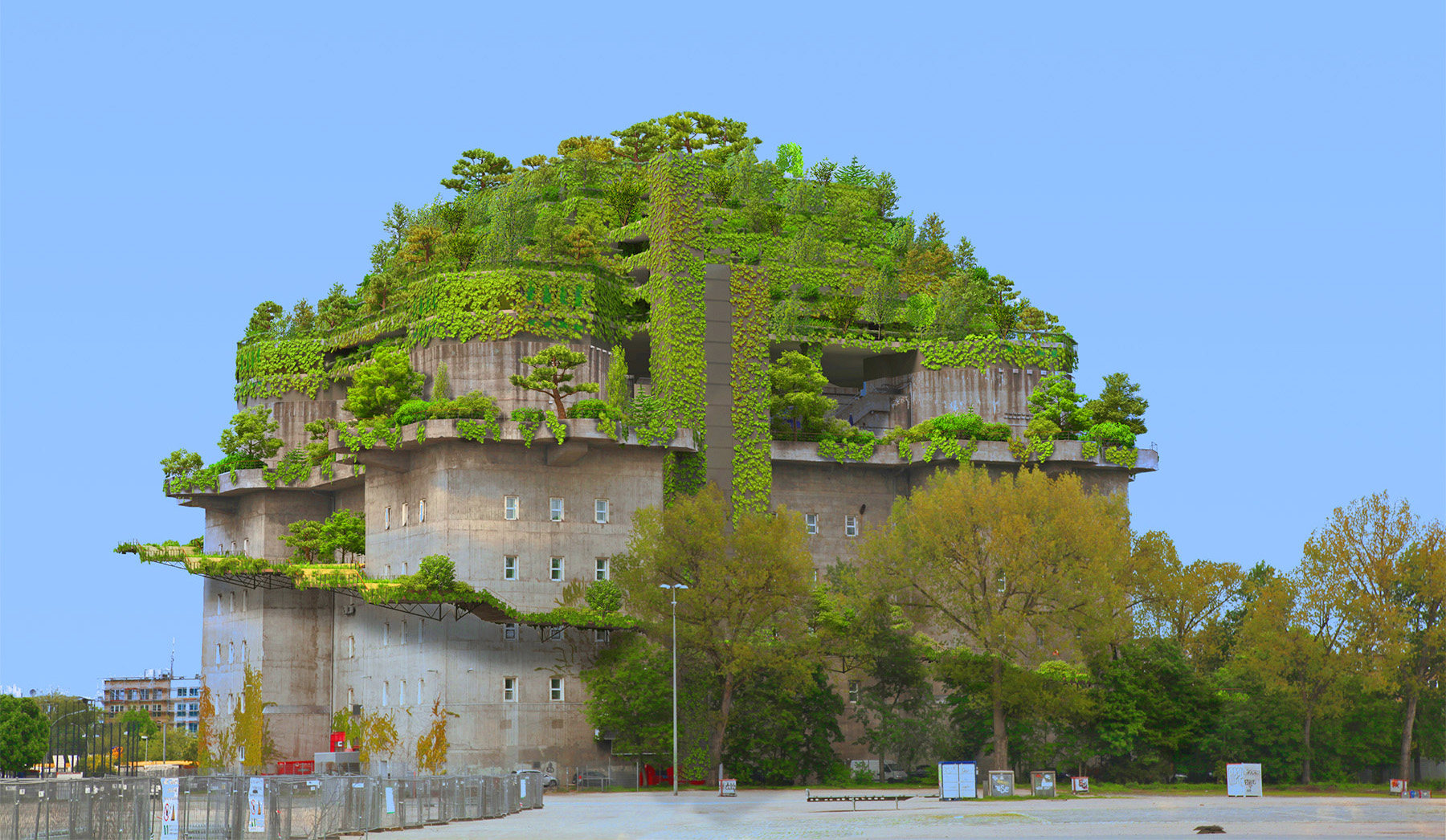
By Boris Reyher, Ph.D., and Knut Goeppert
Creative engineering converted a massive World War II-era structure in Hamburg, Germany, into a new urban park and public space.
A World War II anti-aircraft bunker in the Heiligengeistfeld area of Hamburg, Germany, had seemingly been there for so long that most of the local inhabitants came to accept it as just another part of the neighborhood. Built by forced labor in Hamburg’s St. Pauli district during 1942 and 1943, the Flakturm IV bunker served as one of the city’s two major anti-aircraft command centers during the war. Because it was fortified to withstand heavy bombing, the structure also served as an air raid shelter for up to 25,000 civilians.
In post-war Hamburg, the massive concrete structure — covering a footprint of 75 m by 75 m, with concrete walls and slabs up to 3.8 m thick— created challenges for city planners because of its seeming indestructibility. Even if it could be demolished, “the amount of explosives required would likely tear down the surrounding residential areas along with the bunker,” according to Hamburg city officials. The bunker is owned by the city and managed by the Hamburg-based real estate firm Matzen Immobilien GmbH & Co. KG.
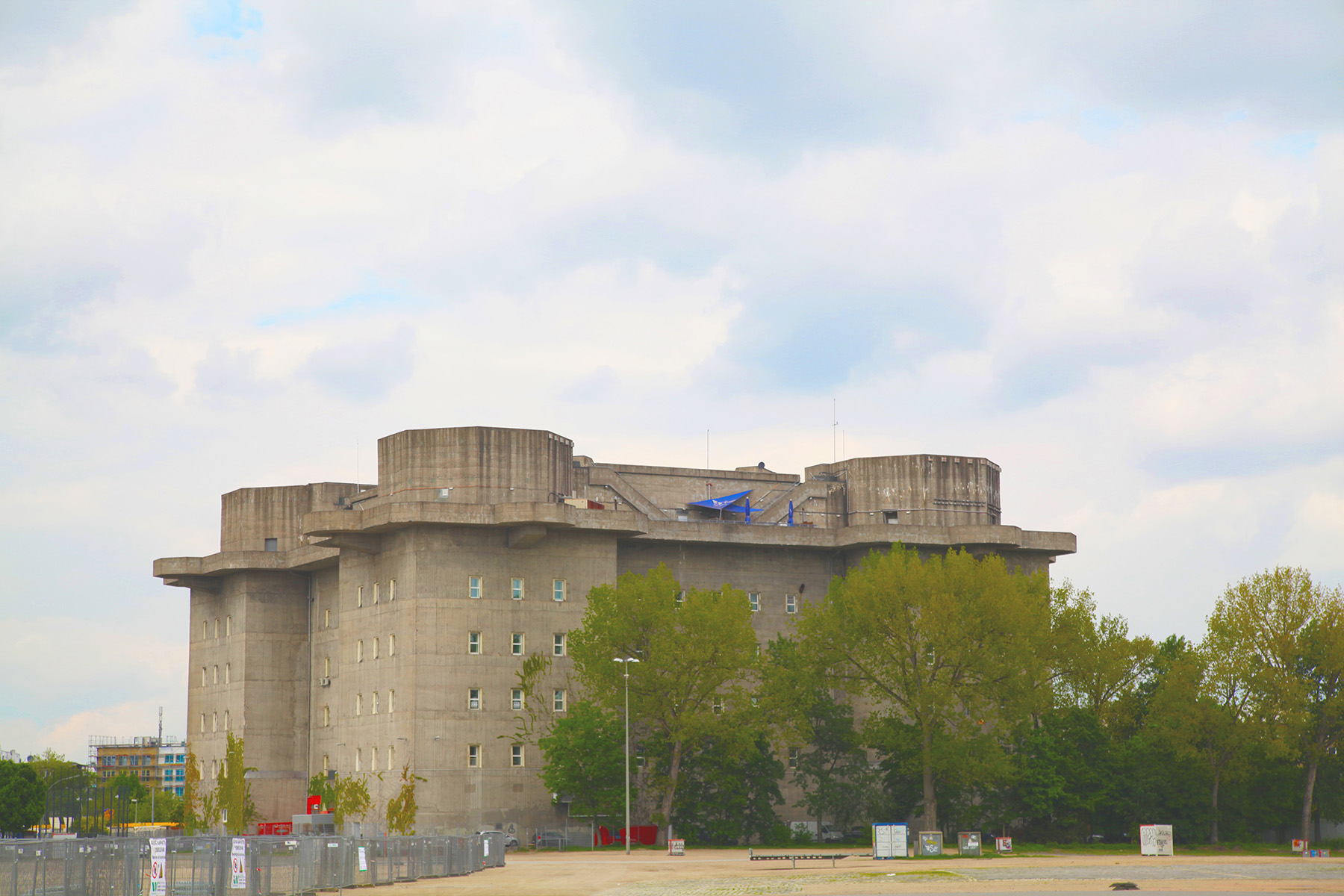
Over the years, the facility has hosted various commercial and cultural organizations, clubs, and events, and has been declared a protected monument. But in relation to its size and visual dominance, the bunker has long been underused.
In 2014, however, residents of the St. Pauli district and architects from the Hamburg-based firm INTER+-POL Interdisziplinäre Studios worked with Matzen Immobilien and the nongovernmental organization Hilldegarden e.V. to develop more than 8,000 sq m of new public spaces on top of the bunker in the form of an urban garden that would be accessible via a new path wrapping around the structure. Called the City Garden on the Bunker project, the plan included the addition of five floors at the top of the bunker to increase the facility’s leasable space.
In addition to a hotel, the new interior spaces include a gymnasium and cultural venues, while the exterior levels — designed by INTERPOL+- Studios and landscape architects L+ Landschaftsarchitekten Felix Holzapfel-Herziger, also of Hamburg — are terraced spaces topped with greenery that ranges from simple flower banks to full-sized trees.
The larger plants are contained in concrete troughs that protect the soil (up to 1 m in depth) and roots. Automated irrigation and drainage systems are integrated into the landscaping. The design team had to consider the weight of the plants, soil, and water in relation to the structural load assumptions for the new concrete floors, including allowance for emergency water levels in case of drainage failure.
Matzen Immobilien will be responsible for the costs and maintenance of this “green mountain” on the bunker, recouping those expenses by renting space inside the five new levels, according to Hilldegarden e.V. There are also plans for various memorials that will detail the bunker’s history.
Path to the top
INTERPOL+- Studios initially commissioned the Berlin office of schlaich bergermann partner structural consulting engineers for the conceptual and structural design of the access path, later adding the structural design of the five new levels to the scope of sbp’s work.
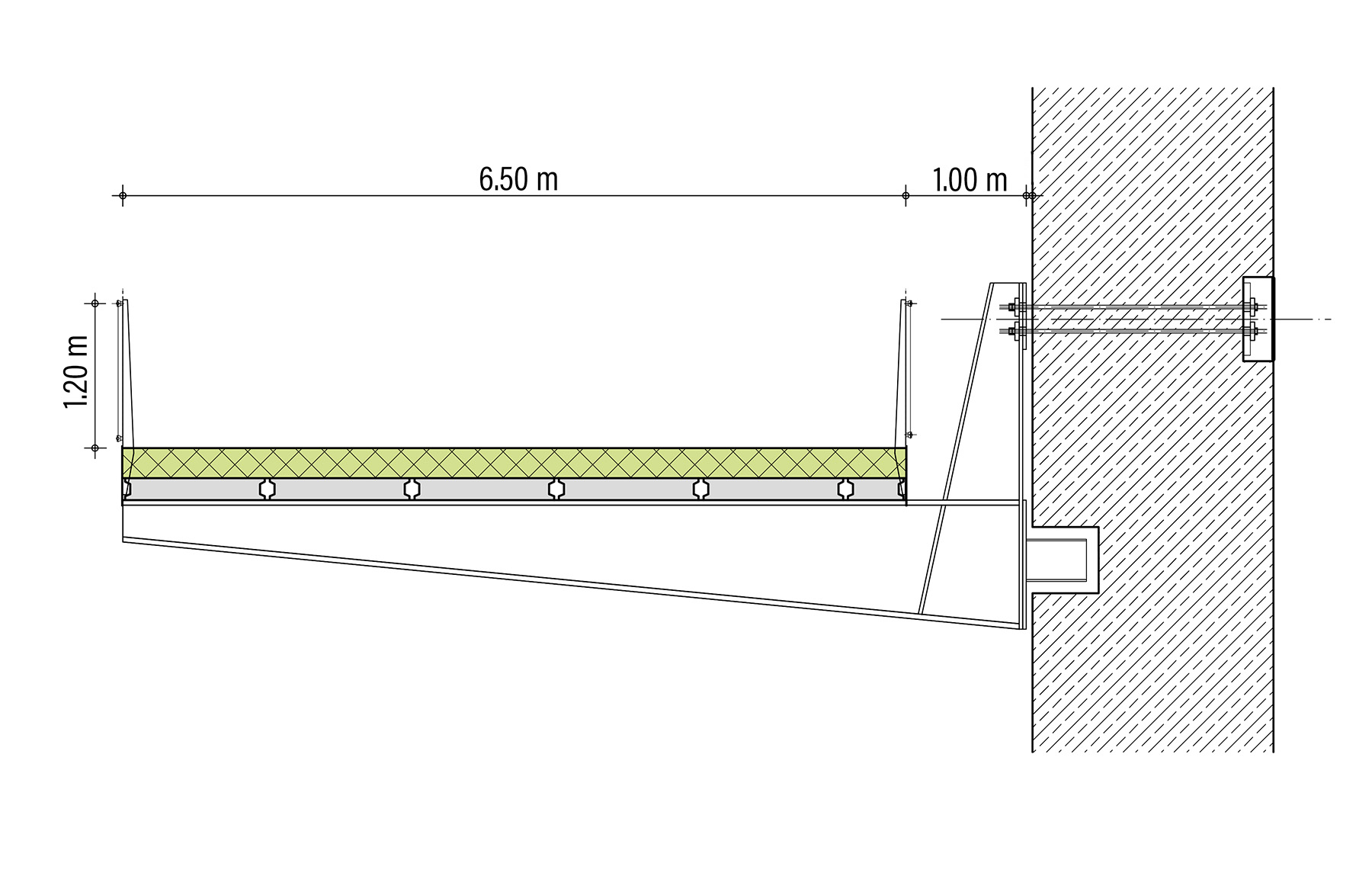
The 300 m long path is a 6.5 m wide bridge structure that starts at ground level and winds its way around the outside of the bunker via a series of stairs and flat segments up to a level just below the original roof of the bunker, some 37 m above street level. With the additional five levels, the bunker now rises to a height of roughly 60 m.
A series of steel, L-shaped cantilever beams attached to the bunker’s solid external walls, which support precast concrete slabs, were used to construct the path. For the path’s flat segments, the design team chose pretensioned hollow-core slab elements, while for the stair segments, the team chose thin reinforced-concrete slab panels with precast stair elements on top. At the centers of its four sides, the bunker facades are set back, and at these locations the path is supported on steel trusses.
The design intent for the path was to minimize structural disturbances of the spaces inside the bunker. However, for the attachment of the L-shaped cantilever beams, it was necessary to drill through the 2 m thick outer walls and anchor prestressed bar tendons from inside.
The railings are made of a highly transparent stainless steel mesh attached to a slender handrail supported on steel posts. Vegetation was planted at various locations on the path to give the impression of a natural mountain trail. With its generous width, the path offers ample space for visitors to rest and enjoy 360-degree views of the city.
Structural scope
Even though the massive bunker structure, with its 2 m thick walls and 3.8 m thick roof slab, seems infinitely strong, the design team had to carefully study and identify the possible load paths inside the 80-year-old structure. To avoid having to verify the flexural and shear strengths of the existing top slab — and potentially having to reinforce it — the team identified loading points where the additional forces from the new levels could be sent to the bunker. This was accomplished through compression in the existing solid columns and walls.
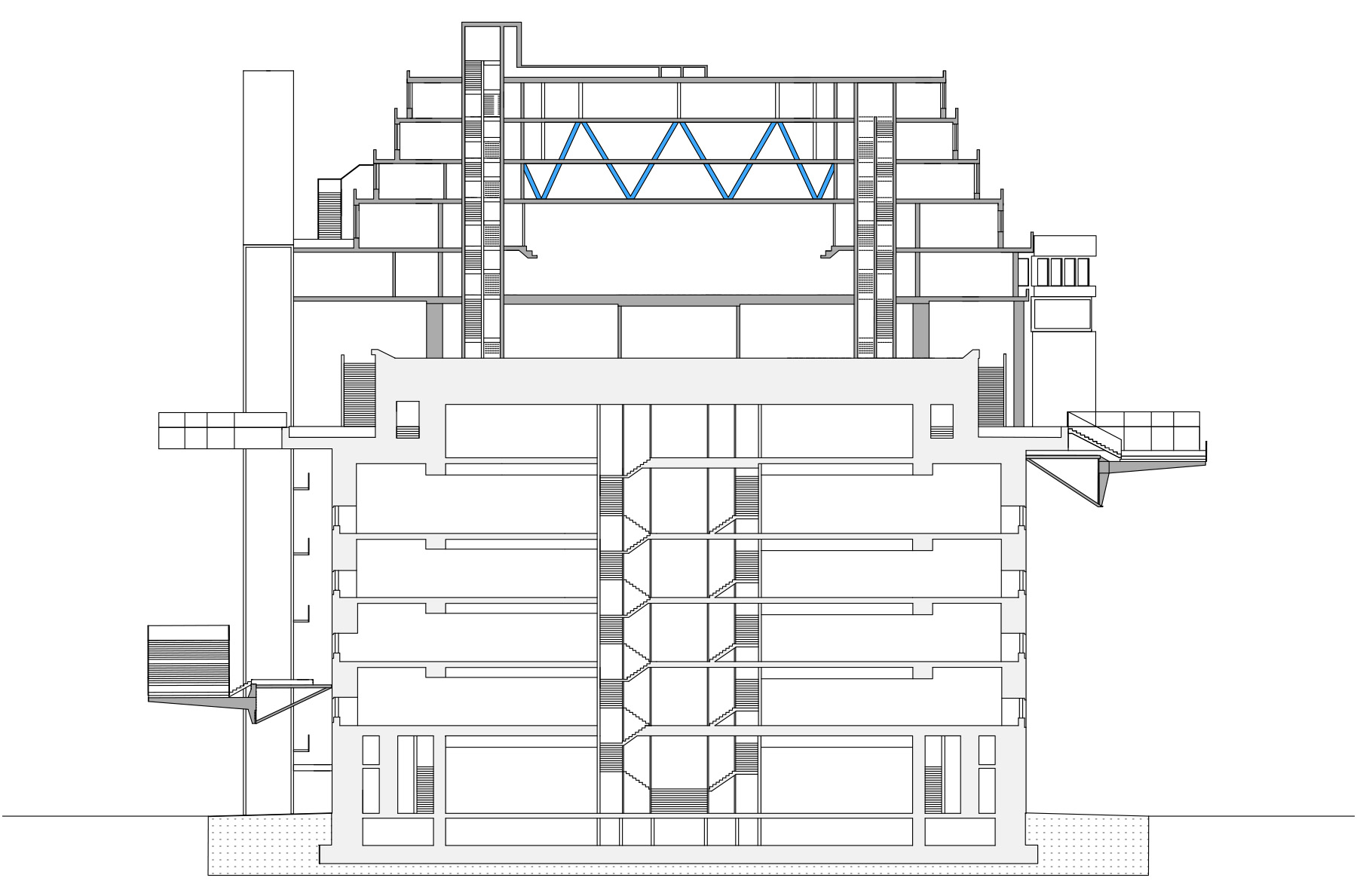
The initial structural concept for the vertical extension was a girder grillage of reinforced-concrete beams nicknamed the “table structure” that would support the walls and columns of the levels above and transfer their loads to defined positions on the existing vertical structures inside the bunker.
But it was soon obvious that the table concept created too many restrictions on the net height of the bunker’s new top levels, where public circulation as well as emergency escape routes were planned. Consequently, sbp developed an alternative structural concept that employed a system of stacked concrete walls surrounding the gymnasium.
This system transfers all vertical loads to two axes of structural support along the existing outer walls of the bunker. Using these partition walls as supporting structures meant that the total height of the additional five levels (20 m) could be used for load paths instead of solely relying on the structural depth generated at a single transfer level.
Establishing loads
Direct vertical load paths for the new levels exist only near the bunker’s core, where four massive, existing internal columns carry the forces from the floor of the two-story gymnasium directly to the foundations. Loads from all other levels are carried by a new spatial system consisting of the reinforced-concrete walls surrounding the gymnasium and shear walls perpendicular to them. The floors above the gymnasium space are supported by a series of new steel trusses at the internal gridlines of the building.
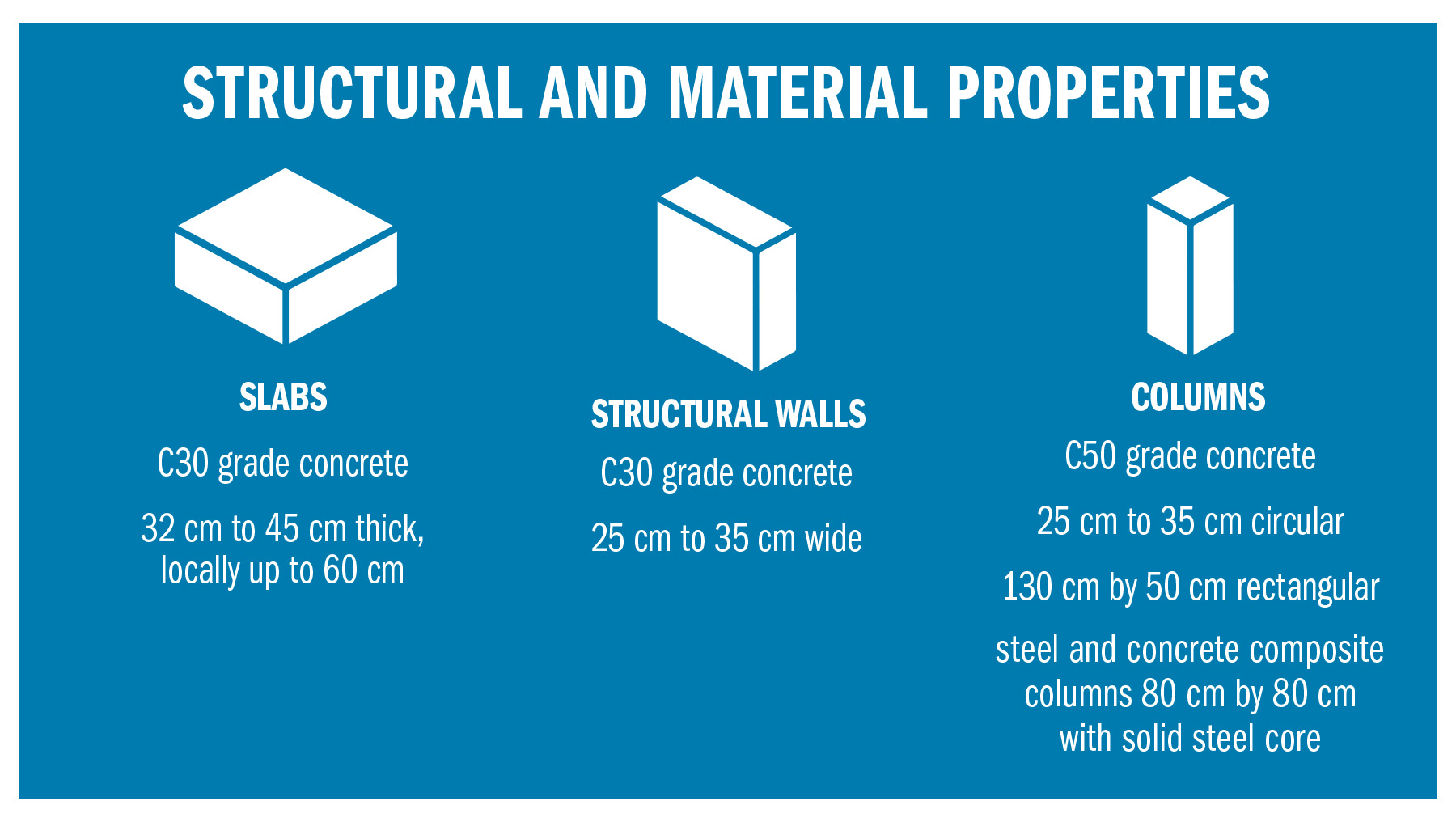
Near the southern facade, the support of the upper levels was designed without diagonal elements, which would block views out of the hotel rooms. Instead, a new steel and concrete composite Vierendeel girder with varying chord and post dimensions transfers the loads across the width of the gymnasium.
At the level of the original bunker roof, the structural loads from the new levels are supported on columns that introduce the additional forces into the existing bunker structure at defined locations. The column sizes and materials were chosen according to their loading and buckling lengths and vary between 25 cm by 25 cm and 50 cm by 130 cm. The slenderest and most loaded columns were planned as high-strength steel concrete-composite columns with a solid steel core to increase their capacity.
A combination of a new concrete lift shaft external to the existing bunker and framing action of the new columns at the bunker roof level provide the horizontal stability of the new upper floors.
The structural analysis of the spatial system was carried out using a 3D finite-element model with quadrilateral flat shell elements representing the walls and slabs, modeled in the SOFiSTiK FEA software, manufactured by SOFiSTiK AG, of Nuremberg, Germany. In particular, the design team had to conduct a detailed structural analysis for the critical construction stages until the completion of the new spatial wall structure.
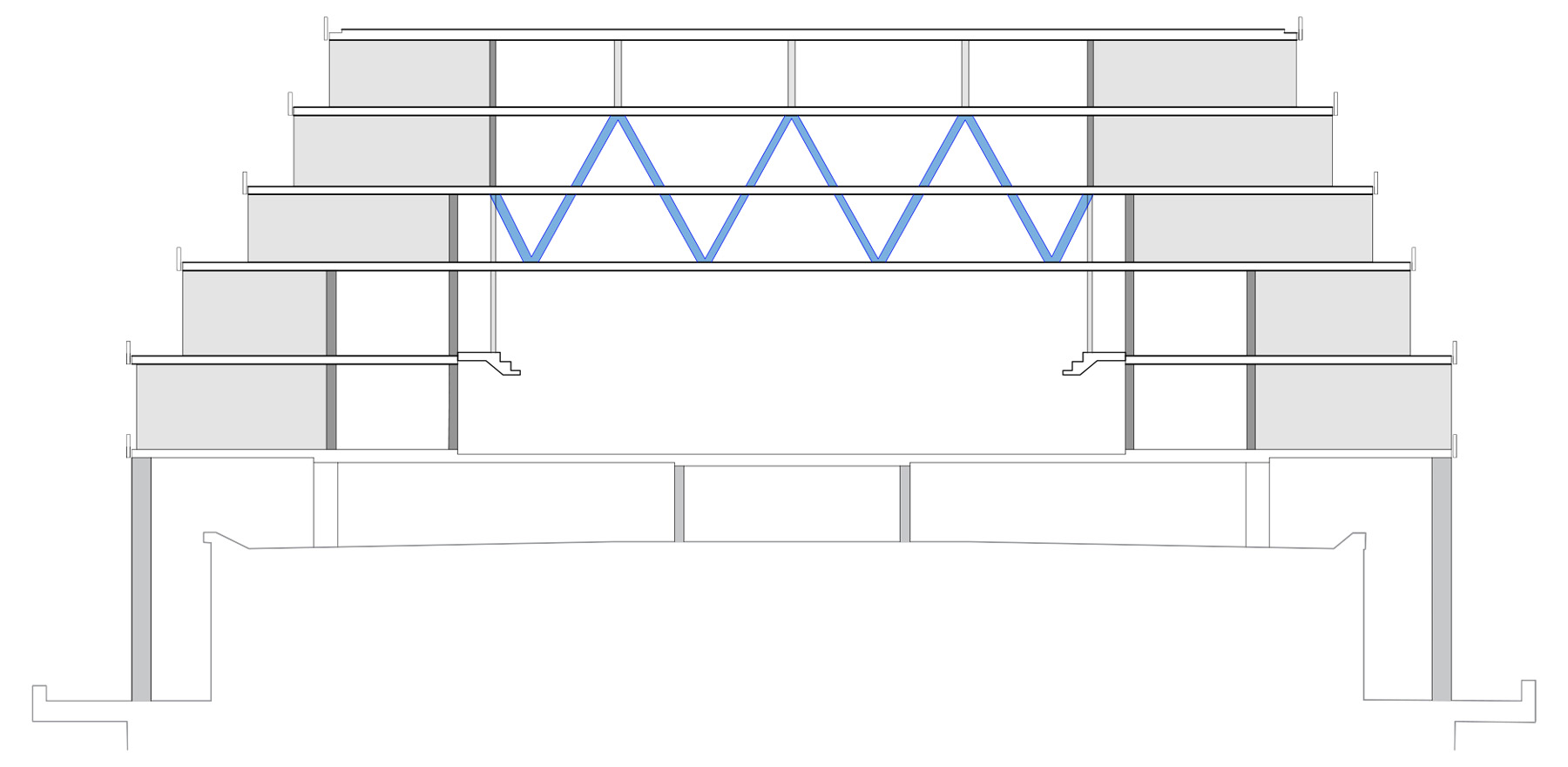
During construction of the new levels, loads were supported by heavy-duty temporary steel props until the new structure was self-supporting. For example, the large steel trusses carrying the floor slabs above the gymnasium were temporarily supported on auxiliary steel columns until the completion of the truss steelwork.
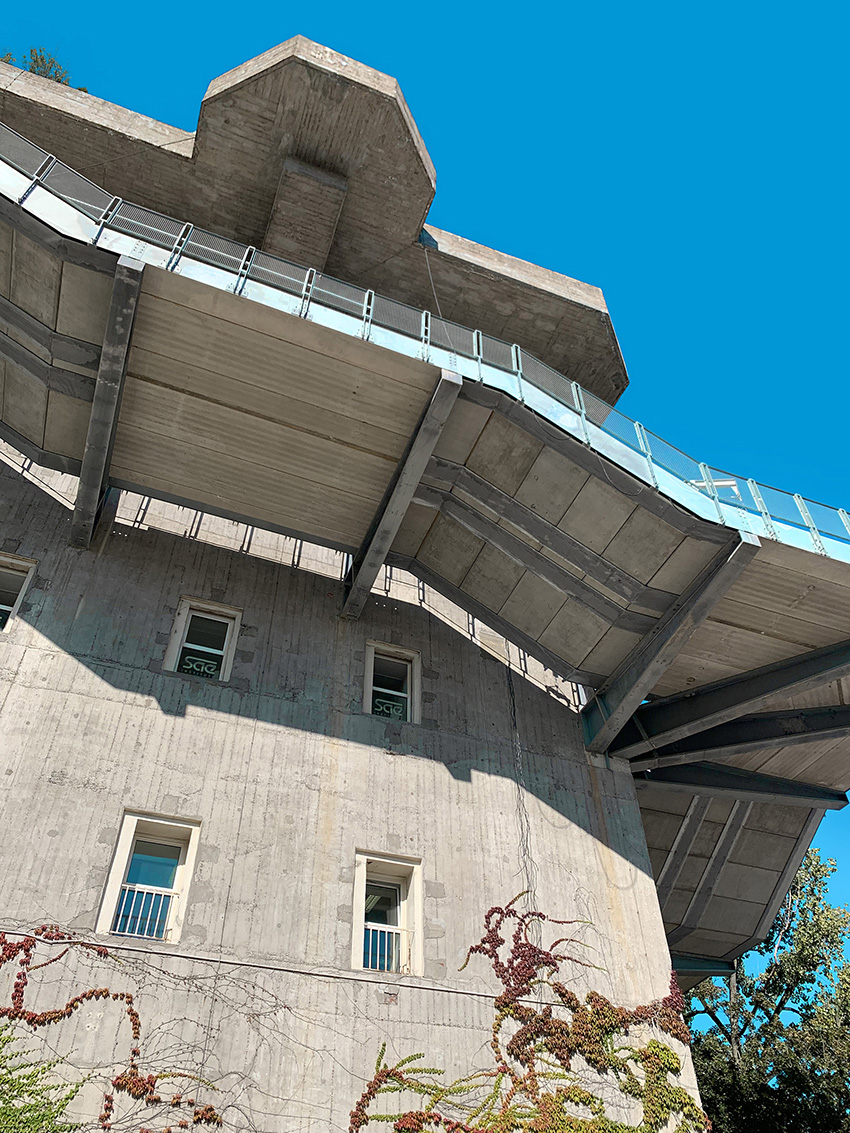
A strut-and-tie analysis of the solid concrete walls and columns verified the load transfer of the additional loads inside the bunker.
Because the existing concrete structure is massive, but the amount of original reinforcement was relatively low and largely undocumented, the strut-and-tie analysis was needed to prove that the additional loads could be safely transferred without significant bending or tension forces in the existing structure.
This way, the team could verify the capacity of the bunker structure without extensive strengthening, which would have interfered with the businesses and other operations within the existing levels in the bunker.
The bunker’s foundation slab proved to have sufficient capacity to safely withstand the additional loads, which was verified by assessing the stress distribution in the base plate and subsoil caused by the additional loading.
Rooftop views
In addition to the path, two outdoor elevators were installed on the east side of the building to provide access to the public green spaces.
The first tree plantings — three mountain pines — were lifted into place by crane on the southwest side of the bunker’s new levels in November 2022. The 3 m tall trees, which weigh roughly half a ton, are the first of more than 20,000 plants that will eventually grow in the city garden above the rooftops of Hamburg.
Some 80 sensors were also installed throughout the bunker’s vegetated levels to record precipitation levels, temperature, humidity, wind speed, atmospheric counter-radiation, global radiation, radiation balance, runoff intensity, and evaporation over a five-year-period. Climate experts from Technical University Berlin will evaluate the data to record the climatic effects on the building and the microclimate in the district.
Overall, a highly efficient structural solution was developed for a geometrically complex building. By using the building’s full new height for structural depth, the design avoided the potential for conflicts between the available story height and the requirements for large load transfers. Thus, creative engineering solutions helped bring this exceptional urban development to reality.
At press time, Hamburg’s new urban park was expected to open in the next few months.
Boris Reyher, Ph.D., is a managing director in the Berlin office of schlaich bergermann partner structural consulting engineers, and Knut Goeppert is a board member of sbp in the firm’s Stuttgart office.
Project credits
Client
Matzen Immobilien
Architect
INTER+-POL Interdisziplinäre Studios of Hamburg, Germany
(preliminary design, schematic design, building approval phase) and phase 10 architects and engineers of Freiberg, Germany (detailed design, construction documents, tender, award, and site supervision phase)
Structural design
schlaich bergermann partner, Stuttgart/Berlin (preliminary design and schematic design phase)
Landscape architect
L+ Landschaftsarchitekten Felix Holzapfel-Herziger, Hamburg
This article first appeared in the January/February 2024 print issue of Civil Engineering as “Green Bunker.”




